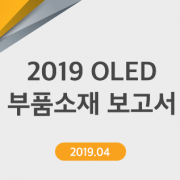In the past MWC 2017, Sony unveiled the world’s first Smartphone with 4K LCD and it is scheduled to release the Xperia XZ2 Premium with 4K LCD on July 4. Attention is growing whether 4K resolution market is to be launched in earnest in smartphones.

<Xperia XZ2 Premium of Sony, Source: theverge.com>
TV market is already moving beyond the 4K to the 8K. Samsung Electronics and Sharp released new TVs with 8K resolution in the first half and Sony plans to release 8K TVs in the second half. LG Display also exhibited 88inch 8K OLED TV at CES 2018. As such, 8K TV is entering the premium TV market, and smart phones are expected to increase the number of products with 4K resolution in response to the higher resolution of TVs.
In the Smartphone, 4K has been implemented in LCD; however, in the case of OLED, QHD resolution is still dominant for the 4 consecutive years.

<Resolution change of Samsung Galaxy series, Source: UBI Research DB>
This is because there are many restrictions on the fine metal mask (FMM) technology that is being applied to OLED manufacturing. The thickness of FMM applied to the current production is about 20 ~ 30um. For 4K fabrication, the thickness should be as thin as 10um, but it is difficult for existing FMM manufacturing method.
As a result, FMM replacement technologies are being developed for high resolution implementation. Typical technologies under developing, include laser FMM patterning with laser, electroforming manufactured by electroplating method, a fine hybrid mask that is used to form a frame by electroplating on a film and pattern the film with a laser, and a surface source that realizes a high resolution by vertically setting the deposition incident angle.
Deposition technologies for high-resolution manufacturing at various exhibitions and conferences are being introduced. Depending on the availability for securing mass production, it is expected to see not only 4K OLED Smartphone, but also high-resolution AR and VR devices of RGB method.




